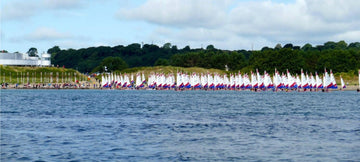This call-book was originally put together in preparation for the 2017 Topper National Championships at Pwllheli, when in UK Junior Squad. It’s based on web information, research and my experience over three seasons of winter training there.
Written by Ben Willett – (Topper UK National Squad, 2017)

The weather conditions on the Llyn Peninsula (at Pwllheli and Abersoch which is further west) can be complex but they give some of the best sailing conditions you will find.
You often have one set of conditions on one side of the peninsula, and something very different on the other side (for example strong winds on the north side, little to nothing on the south side – and vice versa). Similarly, you can have quite different conditions just a mile or two further east or west.
My first piece of advice is to trust the forecasts and the general situation, but pay close attention to the local conditions in your racing area and set up for what you’ve got. Change gear and especially if the weather systems are coming off the land or over the peninsula, be prepared for changes through the day.
Tide
Tide rarely determines the outcome of a race on its own but there can be some flow in the sailing areas south of Pwllheli and into Abersoch Bay, running either NE or SW.
There are no major estuaries along the coastline that affect the sailing area off Pwllheli. Once you are outside the line from the point at Pwllheli (where the caravan park) and the other side of the bay to the east (dashed line below) you have very few factors that affect flow rate.
The only area of note is the river mouth / entrance to Pwllheli harbour and the headland by the caravan park (shaded area below). Ebbing spring tides emptying the harbour exit the river and turn south. If you are racing too close to the shore here, tide will be a necessary part of your strategy. For championship racing, the sailing areas are usually well to the south where the tidal flow is generally quite uniform.

The tidal flow rate in the main sailing area is generally quite slow (maximum 0.5 to 1 knot on springs) and usually quite even across the race area. Tide is therefore less of a factor at Pwllheli than understanding the breeze, waves and having a good technique for boat-speed.

Waves
Waves can be a big factor at Pwllheli as the sailing area is exposed to the prevailing SW winds and there is a lot of sea area for waves to develop. If you go further west to Abersoch, you have the protection of the large headland of Bwlchtocyn. In strong SW winds it often remains sailable at Abersoch when it is unsailable at Pwllheli due to the size of the waves. As a general rule, Pwllheli is no different to other coastal venues though: Good wave technique is important anywhere, especially for the downwind as this is where most of the boat-speed differential is across the Topper fleet. So good wave technique would be a key skill for success at a championship in Pwllheli… so work on this through the week, look at what the faster sailors (and the Jury) are doing and learn from them. Regardless of experience in waves, sailing in them is great fun and a breezy south westerly at Pwllheli is some of the best sailing conditions you will find.
Wind
The wind history shows that SW winds predominate. This is the prevailing wind which can be enhanced in summer by sea breeze. With this in mind, and predictable tide the forecasts are generally very reliable for Pwllheli – but don’t forget the earlier comments about localised factors especially if the cloud is down over the hills north of Pwllheli on the peninsula.

Call-Book
I have divided up the wind directions into five main sectors based on the factors and influences we can expect and I have given a rating from 1 to 5 (5 being most influential) for the following:
- Persistent shifts
- Shifts
- Gusts & oscillations Sea breeze effects
- Waves and tide
The five main wind directions and a summary statement for each are:
Northerlies:
Shifty, gusty and lots of land effect. Be smart.
Easterlies:
Shifty but less land effect; there can be a localised sea breeze impact. Keep your head out of the boat.
South-Easterly:
Difficult to predict. There can be waves, less land effect… Sail fast and focus on the fleet.
South-Westerlies:
The predominant wind direction; expect waves, work on boat-speed and good technique.
Westerlies:
Wind is back over the land, bringing land-effect and wind-bends. Prepare by doing some pre-start homework and be smart.
Northerly (WNW – ENE)

This is going to be gusty and shifty. It’s quite common to have wind on the north side of the Llyn Peninsula but none on the sea at Pwllheli as the wind has to travel over the land and mountains and then doesn’t drop back down to the coast. As a guide, if you have a northerly wind and the clouds are stuck to the top of the hills just inland of Pwllheli then the breeze isn’t going to kick in as strongly. Once the clouds clear the breeze will come.
Expect it to be shifty and unpredictable – more like sailing inland. Stay under the lay-lines and be patient and wait for the shifts. Approach the windward mark from underneath and when you’re going downwind look behind you to see what’s coming. Gusts can be sharp and violent when it’s windy. They can also come downwards onto the water and they spread out like a fan. Upwind you can sail into these fan puffs taking a header first, then ending on a lift as the gust goes through.
Be careful if you’re tacking on these puff-related shifts as you can tack straight back out of them as the gust clears through. Sometimes pays to stay on into a header to make sure it’s a genuine shift and not just a fan puff. Don’t make any snap decisions and stay sharp and focussed. Head out of the boat, don’t rush anything, but expect massive gains at times and never give up… Being smart will be more important than being fast.
|
Persistent Shifts |
3 |
Read the forecast. You really need to know if there’s a persistent shift forecast and if the sea breeze will pull the wind direction round. |
|
Shifts & Oscillations |
5 |
This is a big influence on racing strategy in a northerly breeze. Eyes always out of the boat. Shifts can be quite significant and gusts can be quite extreme. |
|
Weather Systems & Sea Breeze |
3 |
It has to be very hot for the land behind Pwllheli to make a sea breeze substantial enough to reach the sailing area as there isn’t a lot of land there. Main sea breeze is produced by the land to the east. |
|
Land Effects |
5 |
Land effect can be a big factor and you need to see how close you are and whether the valleys and hills onshore will affect wind pressure and direction – especially at mark 1. |
|
Waves |
2 |
Unless you’re quite a long way offshore it won’t be that wavy in comparison to other sectors. |
|
Tide |
1 |
Take a tide check in the racing area and keep doing it. There’s not much tide gradient once you’re offshore. |
Easterly (ENE-SE)

This can be another gusty and shifty direction but not as extreme as the northerlies. If it’s east or south-east then there is a lot more sea for waves to build up especially if the wind is easterly for a long time or very strong. Basically we still regards this as wind off the land but there’s a lot more sea area for it to stabilise.
In summer the sea breeze can be a factor making in making things more unpredictable. You will be looking upwind towards the land and towards a lot of mountains. When the land warms up, the sea breeze wants to pull in from the west (from the sea) and this can cancel out an easterly (look for puffy clouds on the mountain tops from late morning).
In winter it’s unlikely so these notes are for the summer time: Easterlies can be very unpredictable and the sea breeze can cancel out the wind altogether. Some of the land inshore on the mainland is very high so it takes a long time to warm up sufficiently. If you can see white puffy clouds building up over the mountains on the land to the east then expect an easterly wind to gradually get lighter and even die (sometimes with a light westerly late on in the late afternoon).
|
Persistent Shifts |
3 |
Read the forecast. You really need to know if there’s a persistent shift forecast through the day. |
|
Shifts & Oscillations |
5 |
This will be a big influence on racing strategy. Unlike the northerlies the oscillations can have more pattern to them so you can make your decisions and tack on shifts more reliably and even go before the shift with more confidence that you’ll still bank the gains. |
|
Weather Systems & Sea Breeze |
4 |
Look for clouds inland. The main sea breeze is produced by the land to the east, so it can cancel out the easterly wind so be ready to change gear into light wind mode and keep the boat moving. Look for pressure… |
|
Land Effects |
3 |
The land to the east is actually a very long way away so there won’t be valleys and land effects nearby but you will get oscillations that are more predictable. |
|
Waves |
3 |
Waves can build up into a short chop if there’s a strong easterly and the more it comes from the south. |
|
Tide |
1 |
Tide isn’t really a factor if you’re offshore. |
South-Easterly (ESE-S)

South easterlies aren’t that frequent but when they’re forecast, you’ve got lots of sea for waves to build up and in the summer the sea breeze can pull the wind round to the west more. So although it can be a stable wind direction, you need to know about the sea breeze as this can predict a persistent shift later in the day (going to the right as it gets more westerly influence). In general, expect stable breeze, some waves, and look out for sea breeze factors giving a late, gradual right shift. It’s a wind direction where pure boat-speed is a big factor so if there’s no obvious direction to go for, or your strategy isn’t clear, then you absolutely need to be as fast as possible and start well.
It’s a direction where often the sides of the course pay more than the centre. It’s not so much about clear gain features on the sides of the course but in light SE winds in particular a big fleet of 100+ boats will create a lot of disturbance. There tends to be more stable pressure on the sides and although longer distance, going down the edge of the fleet will pay on the run pays, especially coming into the leeward gate avoiding the vacuum there. Going back upwind you can get a lift off the edge of the fleet coming down.
|
Persistent Shifts |
4 |
Read the forecast. You really need to know if there’s a persistent shift forecast through the day, and some weather models will be able to predict a sea breeze shift from around 15:00 in the summer if it’s really warm. |
|
Shifts & Oscillations |
2 |
There is a large expanse of sea to the south east so you won’t get sudden and dramatic shifts. You will get some oscillations that you can usually time and predict – but not huge. |
|
Weather Systems & Sea Breeze |
3 |
It has to be very hot for the sea breeze to pull a strong SE wind around but lighter southerlies can be affected in summer. |
|
Land Effects |
2 |
There isn’t a lot of land to affect the wind in the race area. Pure boat-speed always pays no matter what! Start well, back your speed and if you can cross the fleet, do so. Be prepared to work the sides of the course for stable pressure. |
|
Waves |
4 |
There is quite a bit of sea for waves to build but all relative to the windspeed. |
|
Tide |
1 |
Tide isn’t really a factor compared to the other factors. |
South Westerlies (S-WSW)

South westerlies are the most common wind direction. A well-established south-westerly means stable wind, and waves. Few other factors will affect you to the same extent so your basics become really important to you and it’s vital that you sail consistently and take whatever gains and advantage there are as you’re not going to get loads of shifts or smart ways to move up the fleet if you fluff a start or miss the line bias. You need to be super-fast, starting well and making sensible decisions to build a series. Don’t take too many risks. Wave technique is the key thing, especially downwind. Never switch off – work hard all day! Don’t underestimate how even small waves can make a big difference to you.
Watch the forecast in the days before and look at how long the SW has been blowing and for how long; also how much it is blowing out towards Ireland on a bigger map and synoptic chart. This can help you to predict the waves in the racing area. In very big seas make sure you sight the marks and course before the start and be prepared to lose sight of the pin-end as well as other competitors at times. The PRO will be up higher than you so assume they can see everything. If the wind is forecast to die out expect the waves to stay behind (if you suffer with sea-sickness take a tablet – before you launch). In summer the amount of land to the east can generate a sea breeze which can make a SW breeze even stronger. Sail fast, be strong, nail the starts and don’t do anything daft. Be prepared to work hard all day…
|
Persistent Shifts |
3 |
Read the forecast. You really need to know if there’s a persistent shift forecast through the day. Know when it due and be prepared to work that side. |
|
Shifts & Oscillations |
2 |
There is nothing much to influence the wind. You can have oscillations but not the major shifts that you get off the land. |
|
Weather Systems & Sea Breeze |
2 |
Need to know if the sea breeze will influence the wind direction but it really just means wind getting stronger. If it’s breezy hiking conditions eat well and have enough fuel for the day. Work hard downwind… This can be a game changer. |
|
Land Effects |
1 |
There isn’t any land affecting the wind. |
|
Waves |
5 |
There will be waves… Even small ones need your attention. Work hard all the time and go full speed. Upwind have good technique to make places; then downwind, surf and working hard can make huge differences to boat-speed. |
|
Tide |
1 |
Tide isn’t really a factor unless it’s light wind. |
Westerlies (WSW-WNW)

Westerlies are difficult and it will depend on where the racing area is to know if land is a factor. If you’re off shore and away from the influence of the headland then it can be quite stable. However if you’re close to shore you can get land influencing the strategy.
If you’re close to the land you get a wind-bend around Pwllheli itself as the wind splits and goes each side (coming off the beach from the right, and left from the coast and Abersoch direction). In these circumstances it can be worth doing a long split tack and seeing how much one side pays over the other as there can be a favoured wind-bend that will stay in most of the time.
The closer to land, expect shifty conditions and gusts again. Waves are less of a factor as there hasn’t been enough sea for it to build up (unless it has been blowing SW for a long time beforehand).
|
Persistent Shifts |
3 |
Read the forecast. You really need to know if there’s a persistent shift forecast through the day, and some weather models will be able to predict a sea breeze. |
|
Shifts & Oscillations |
5 |
You often find a wind-bend closer to the land and less oscillations. Go out early and do your homework on the racing area as you will need to find out which side pays. Take a tuning partner and split tack and remember it usually takes 8x the tack-time to complete a full split tack cycle both ways. Don’t be caught out too far from the starting area if it’s light. |
|
Weather Systems & Sea Breeze |
2 |
If it’s hot in summer, sea breeze will influence the wind and if anything it will help the wind to build. |
|
Land Effects |
5 |
The land will affect your plan if you’re close enough to it but it’s hard to predict as it will depend where the racing area is. As above, go out and check. If you don’t see any pattern then treat it like wind coming off the land: Stay under the lay-lines and be ready to respond to shifts; review each beat and learn, so that you build knowledge what is happening. |
|
Waves |
2 |
It won’t tend to be wavy unless the wind pulls south. |
|
Tide |
1 |
Tide flow will generally be up / down the course and so check any flow and impact on start-line and lay-line. |




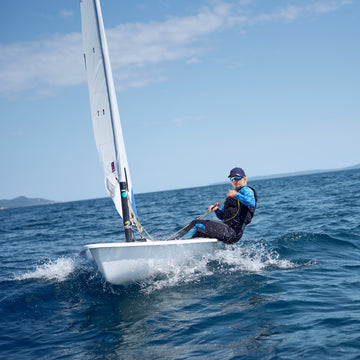
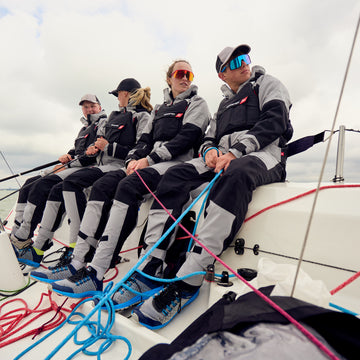
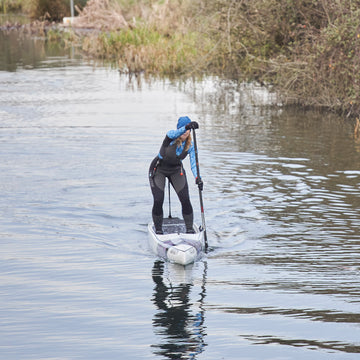
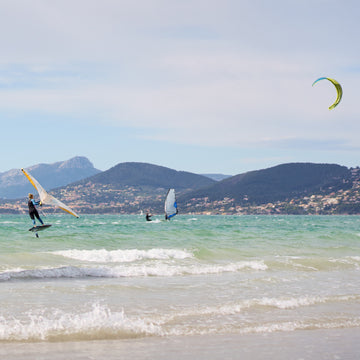

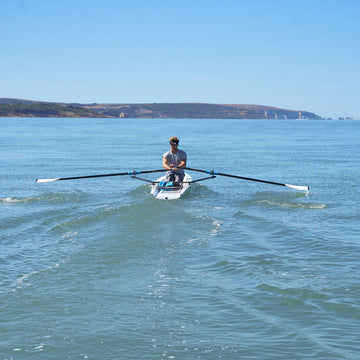
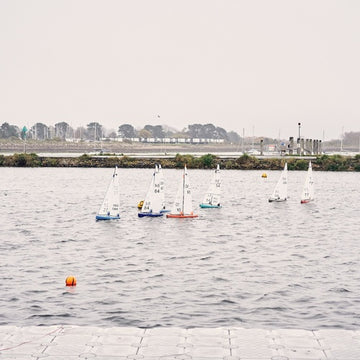
 Select Store
Select Store
 EU
EU
 US
US
